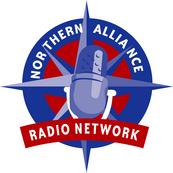Why Pakistan wants to hold on to Balochistan
An interesting post at the website of the Government of Balochistan in Exile details the potential riches in Balochistan. I can't independently vouch for the numbers, but the province does hold great promise in terms of natural resources.
This is one of the chief reasons behind the insurgency there. The Balochs feel the Pakistani government takes the greater portion of revenues generated by these resources, and does not give a fair share to the Balochs. Poverty and lack of education are problems in this province, and these resources could certainly be used to improve conditions for the people who live atop these resources.
Understandable, then, that Pakistan will not be quick to let go of this province. Here is a summary of the post.
This is one of the chief reasons behind the insurgency there. The Balochs feel the Pakistani government takes the greater portion of revenues generated by these resources, and does not give a fair share to the Balochs. Poverty and lack of education are problems in this province, and these resources could certainly be used to improve conditions for the people who live atop these resources.
Understandable, then, that Pakistan will not be quick to let go of this province. Here is a summary of the post.
POPULATION
There are approximately 15 million Baloch in the world. About 2.06 million live in Iran, 8.3 million live in Pakistan (3.25 are currently living in Pakistanís Balochistan province), and 930,000 live in Afghanistan. The remaining Baloch population is scattered all over. [Baloch comprise 3% of Afghanistanís population, 3% of Iranís population, and 5% of Pakistanís population]
OIL AND GAS [Revenue: $42 billion per year]
Oil and Gas, both offshore and onshore, can generate a major portion of the total annual revenue for Balochistan. According to the Geological Survey of Pakistan (GSP), it was estimated during their offshore exploration that there are reserves of 19 trillion cubic feet of gas and 6 trillion barrels of oil in Balochistan.
MINERAL [Revenue: $1.5 billion per year]
The territory is based on the geological belt with known world-class mineral deposits that could generate several billion dollars in revenues annually. More than 50 metallic and non-metallic minerals have been discovered in Balochistan. Metallic ores are chromites, copper, gold, silver, iron ore, lead and zinc, while the non-metallic include barite, marble, granite, gypsum, limestone, coal, dolomite, calcite, silica sand, and various building/engineering stones.
The Rekodiq project is estimated to produce 200,000 tons of copper and 400,000 ounces of gold per year. Saindek mines produce 15,800 tons of copper, 53,000 ounces of gold and 106,000 ounces of silver per year.
AGRICULTURE [Revenue: $250 million per year]
Balochistan possesses enormous economic potential in farming, livestock, and fisheries. These resources provide the base for setting up a large number of agro-based industries.
GWADAR PORT [Revenue: $10 billion per year]
Located outside the Straight of Hormuz, Gwadar Port will offer direct road access to Afghanistan, Central Asian States, and China.
GAS AND OIL PIPELINE [Revenue: $2 billion per year]
There are three major pipeline projects on the books. The merging point of all these three pipelines will create opportunities for Baloch industrialists to develop value added downstream industries, such as oil refinery, fertilizer plants, pharmaceutical, petrochemical, etc.
US AIR BASES [Revenue: $600 million per year]
Currently, Dalbandin and Pasni air bases are leased to the US government.
TOURISM [Revenue: $150 million per year]
By having a democratic, liberal and secular government in place, Balochistan has the potential to attract global tourism to its coastal region. In 2005, over 2 million tourists traveled to Iran and Pakistan. It is safe to assume that Balochistan can attract over 200,000 tourists per year.








0 Comments:
Post a Comment
<< Home